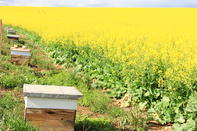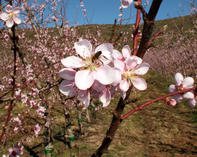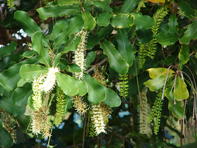Bees are ‘famous’ for their honey (and other products) that they produce. But there has been an increasing awareness of the important service bees provide by pollinating plants.

The value of honey bees as pollinators may far outweigh their value as honey producers. In South Africa, some plants are totally dependent on bees for pollination in order to produce fruit.
These include strawberries, blueberries and blackberries, oil-plants such as sunflowers, as well as almonds and macadamia nuts. Deciduous fruits like plums, pears and apples also require bees to pollinate their blossoms to produce fruit.
Beekeepers vs Crop Farmers

The arrangement between beekeepers and crop farmers for pollination services differs from landowner to landowner and even the type of crop, says Dr Tlou Masehela of the South African National Biodiversity Institute (SANBI).
For citrus and canola where no bee pollination is required, there is no payment from the farmer to the beekeeper, but the farmer might request some form of compensation from the beekeeper such as honey. For pollination-dependent crops like apples and plums, the farmer pays the beekeeper.
Where there is a mix of crops and natural vegetation, the farmer and beekeeper might both offer something in exchange. In any of these cases, there might be a formal agreement (contract) or none, but most often where paid-for pollination services are provided there is a contract between beekeeper and the crop farmer.
The Cost of Pollination Services
The ever decreasing natural forage of bees in South Africa limits the production of honey to about 10 - 12 kg per colony in a year. This is much lower compared to the USA (30 kg/year) and Australia (50 kg/year). In addition, the price for honey in South Africa is low and further under pressure from cheaper imports priced at R50/kg (2017).
Again, these prices compare poorly with the USA (R75/kg) and Australia (R80/kg). Low production and price of honey increase the importance of paid-for pollination services for beekeepers in South Africa to remain viable.
Research conducted by Mike Allsopp of the Agricultural Research Council (ARC) and Dr Masehela in 2017, explains that the price of pollination service is determined by demand and availability and is not constant between crops and seasons. In America early spring-blossoming crops such as blueberries and almonds compete for pollination services, increasing the price of pollination.
Their research shows that within a few years the price for almond pollination increased from $35 to $180 per colony. Crops blossoming later in the season (e.g. apples) may have an abundance of colonies available with a subsequent lower pollination price.
Pollination Fees

In South Africa, there is a recommended pollination fee. This tariff is a guide but is not adopted by all beekeepers, depending on the crop. Some crops cause more stress to bees such as berries, pumpkins, macadamia and litchis so some beekeepers would charge more for pollination services of these crops.
The pollination fee is calculated through a complex formula incorporating beekeeping input costs such as transport, sugar (feeding) and labour. The recommended pollination fee in 2018 was R802 for one pollination unit.
A pollination unit is one hive for a maximum of 21 days. This is also called a pollination wave. After this period, the beekeeper can charge the same tariff or adapt the tariff after negotiations with the farmer.
By Marinda Louw